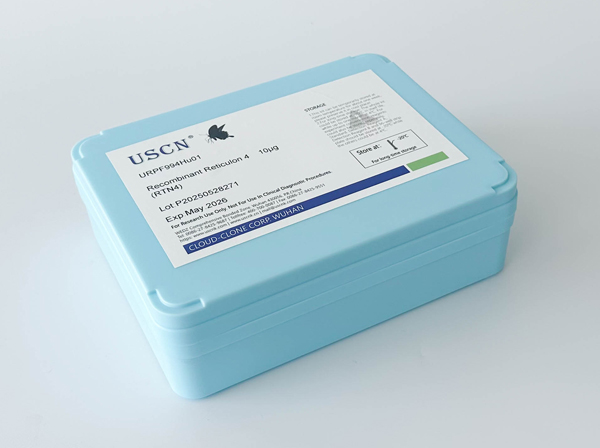Active Complement Component 5a (C5a)
- Product No.UAPA388Hu61
- Organism SpeciesHomo sapiens (Human) Same name, Different species.
- Buffer FormulationPBS, pH7.4, containing 5% Trehalose.
- TraitsFreeze-dried powder
- Purity> 95%
- Isoelectric Point8.9
- ApplicationsCell culture; Activity Assays.
- Download Instruction Manual
- UOM 10µg50µg 200µg 1mg 5mg
-
FOB
US$ 168
For more details, please contact local distributors!US$ 420
For more details, please contact local distributors! US$ 840
For more details, please contact local distributors! US$ 2520
For more details, please contact local distributors! US$ 6300
For more details, please contact local distributors!
ACTIVITY TEST of the Active Complement Component 5a (C5a)

Complement Component 5a (C5a) is a component of the complement system which plays a key role in promoting migration and adherence of neutrophils and monocytes to vessel walls. C5a has been proven to be able to induce chemotactic migration of THP-1 cells. Therefore, chemotaxis assay used 24-well microchemotaxis system was undertaken to detect the chemotactic effect of C5a on the human monocytic cell line THP-1. Briefly, THP-1 cells were seeded into the upper chambers (100µL cell suspension, 106 cells/mL in RPMI 1640 with 0.5% FBS) and C5a (50ng/mL and 100ng/mL diluted separately in serum free RPMI 1640) was added in lower chamber with a polycarbonate filter (8µm pore size) used to separate the two compartments. After incubation at 37oC with 5% CO2 for 2h, the filter was removed, then cells in low chamber were observed by inverted microscope at low magnification (×100) and the number of migrated cells were counted at high magnification (×400) randomly (five fields for each filter). Result: C5a is able to induce migration of THP-1 cells. The migrated THP-1 cells in low chamber at low magnification (×100) were shown in Figure 1. Five fields of each chamber were randomly chosen to count the migrated cells at high magnification (×400) and the statistical data was shown in Figure 2.
(A) THP-1 cells were seeded into the upper chambers and 50ng/mL C5a was added in lower chamber, then cells in lower chamber were observed at low magnification (×100) after incubation for 3h;
(B) THP-1 cells were seeded into the upper chambers and 100ng/mL C5a was added in lower chamber, then cells in lower chamber were observed at low magnification (×100) after incubation for 3h;
(C) THP-1 cells were seeded into the upper chambers and serum free RPMI 1640 without C5a was added in lower chamber, then cells in lower chamber were observed at low magnification (×100) after incubation for 3h.
Figure. The chemotactic effect of C5a on THP-1 cells.

Figure. The chemotactic effect of C5a on THP-1 cells

The activity of recombinant human C5a was also measured by its ability to induce N-acetyl-β-D-glucosaminidase release from differentiated U937 human histiocytic lymphoma cells. 3.2*106 differentiated U937 cells were added to the 24-well plate and different concentrations of rhC5a was added to the 24-well plate and incubated at 37 ℃ for 3min. The cells were centrifuged at 400 g for 3min, and the supernatant contained N-acetyl-β-D-glucosaminidase. The enzyme activity of N-acetyl-β-D-glucosaminidase was measured by the substrate of 4-Nitrophenyl 2-acetamido-2-deoxy-β-D-glucopyranoside. The result was shown in figure 1, It was obvious that rhC5a can significantly induce N-acetyl-β-D-glucosaminidase release.
USAGE of the Active Complement Component 5a (C5a)
Reconstitute in 10mM PBS (pH7.4) to a concentration of 0.1-1.0 mg/mL. Do not vortex.
STORAGE of the Active Complement Component 5a (C5a)
Avoid repeated freeze/thaw cycles. Store at 2-8°C for one month. Aliquot and store at -80°C for 12 months.
STABILITY of the Active Complement Component 5a (C5a)
The thermal stability is described by the loss rate. The loss rate was determined by accelerated thermal degradation test, that is, incubate the protein at 37°C for 48h, and no obvious degradation and precipitation were observed. The loss rate is less than 5% within the expiration date under appropriate storage condition.



